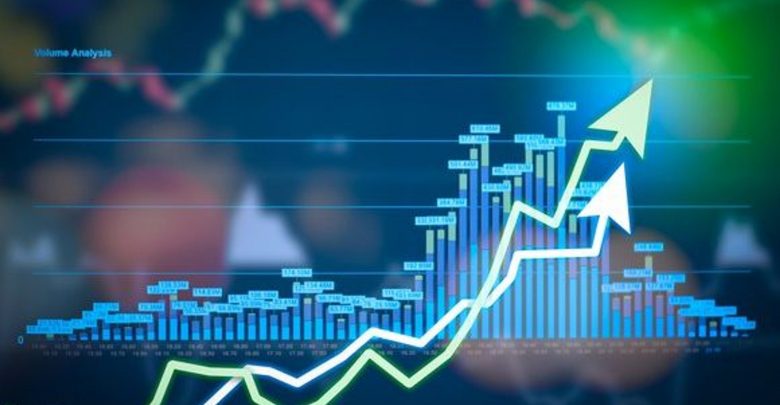Given the recent beginnings of the economic recovery in Pakistan, what can investors in the equity markets expect as far as returns over the next two years or so? If the analysts at JS Global Capital, a leading investment bank, are to be believed, returns might approach close to 50% over the next two years.
JS Global’s recently released Pakistan Market Strategy is so optimistic, that the reader could be forgiven for thinking that perhaps the analysts are letting the animal spirits get the better of them. The report is not only practically joyous in its outlook, but also grandiose. Consider the opening sentences:
“What is to stop the equity market from reaching out for the stars once the dust settles? The quintessential behaviour of Pakistan’s equity market has time and again exceeded the wildest expectations of those who have dared to dream! So why not take this opportunity to pluck the fruit while it is still ripe?”
The hyperbole notwithstanding, the report is interesting for a few reasons. For one, it claims that the preceding two IMF programs had been checkpoints for Pakistan equities. “The bottom that the market has made post IMF-entry has not been revisited.” the report says.
The report has also claimed the benchmark index could hit 60,000 by 2021. How did JS Global reach this conclusion?
First: “With regards to valuations, Pakistan’s market capitalization to GDP and free float to M2 ratios are both well below their 10-year averages. A simple mean reversion would land the benchmark index at 50,000! Coincidently, real returns that the index would provide at this level match the 20-year-averages.”
Gross domestic product (GDP) is a measure of the total size of the economy. Market capitalisation represents the total value of all shares listed on the stock exchange. M2 is a measure of money supply, and generally refers to physical cash, plus bank deposits. Free float refers to the proportion of a company’s shares that are available for trading, which is to say, not held by investors who have management control.
Secondly, “While the market cap to GDP and domestically held free float to M2 ratios both present strong cases for a 50,000 target under a mean reversion scenario, is it not fascinating that our Target Price-based methodology computes the same index levels?”
What the analysts are referring to in this sentence is the level of the benchmark KSE-100 index, which, as of the close of trading on Friday, December 27, 2019 was at 40,848.53. A rise to 50,000 by the end of calendar year 2020 would mean that investors in the stock market, on average, would make a return of 22.4% over the course of a single year. The inflation forecast for next year, according to most analysts, is in the range of 12% or so.
“We think not. The weak earnings we have seen, particularly with regards to cyclical stocks, have come alongside falling prices on the bourse. As a result, the net effect on the Price to Earnings ratio has been largely off-set. Nonetheless, the market trades at a discount to its 10 year average P/E providing (yet again) potential to reach an index target around the 50k mark. In such an environment, we find it more prudent to value stocks based on the Price to Book ratio to filter out the impact of fluctuating earnings. Here we find that if the multiple were to revert to its 10-year average, the index could potentially reach 60,000 levels!”
If the KSE-100 index reaches a level of 60,000 by the end of calendar year 2021, that would mean that investors who remain invested in the stock market for the next two years, would stand to earn an average return on investment of approximately 21.2% per year, during a time when inflation is expected to average closer to 10% per year.
While those numbers may seem outstanding, investors in the Pakistan Stock Exchange who have remained invested and not engaged in panic selling during downturns have earned substantial returns over the past two decades.
Between June 30, 1998 and June 30, 2019, the benchmark KSE-100 index – which represents total returns on stocks listed on the stock exchange – rose by an average of 19.0% per year. In inflation-adjusted terms, investors earned a return of 10.85% per year during that same period.
Yet to say the phrase “on average” hides considerable variation. During calendar year 2008, stocks declined by 58.3% in a single year. In calendar year 2002, however, stocks rose by 112.2% over the course of a single year. Average, in other words, hides real substantial variation.
The key to stock market investing, then, is patience: not selling when the market crashes like it did in 2008, and not overzealously buying when the market reaches its peaks.
The report did have some concerns, all thrown on to one page of 91 pages in the report. These include the FATF blacklist, a potential war with India, hike in oil prices, and ‘anti-government squabbles’.
“Recent events such as … the verdict regarding an ex-President-cum-Army chief… they have proven to be essential ingredients in brewing market volatility.”






















There’re more chances of an alien descending on earth and asking for stock market tips than kse-100 hitting all-time-high in 2020.
Interesting analogy. I will be glad enough if it 50-60% true.
Comments are closed.